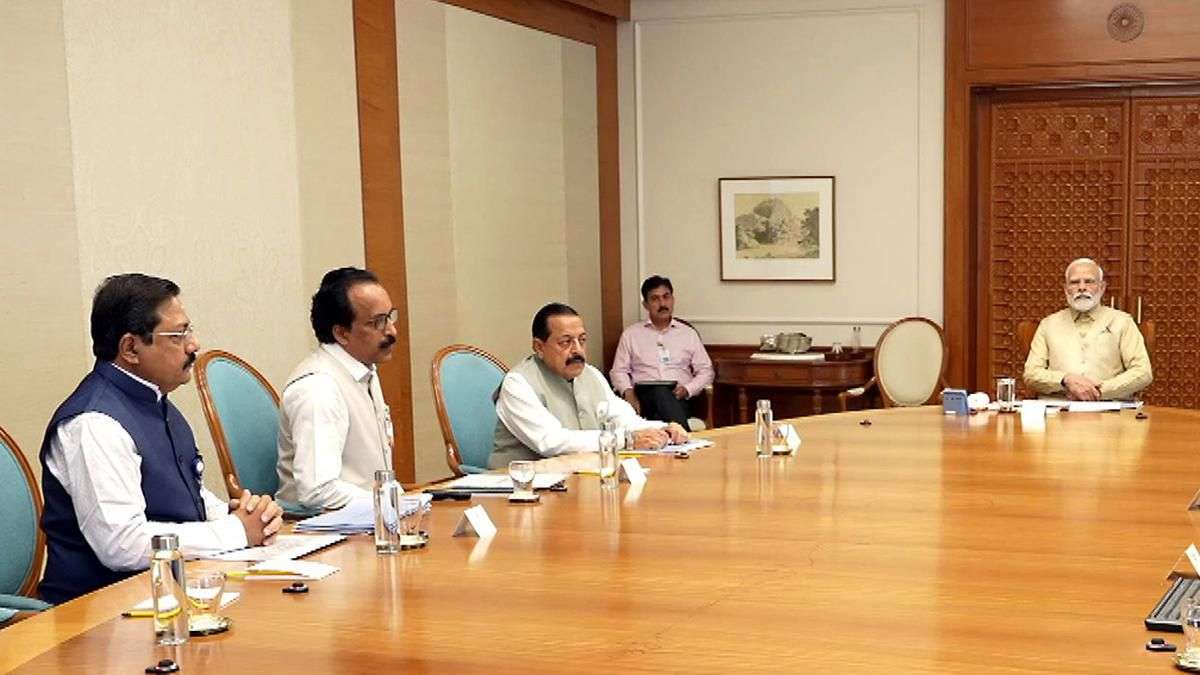Highlights
|
Indian Space Research Organization (ISRO), India's space agency, has made a major breakthrough in its ambitious Gaganyaan human spaceflight program with the successful test launch of the Test Vehicle (TV-D1). The TV-D1 is a single-stage liquid rocket that was launched from Sriharikota, Andhra Pradesh.
#WATCH | Sriharikota: ISRO launches test flight for Gaganyaan mission after first test flight was aborted pic.twitter.com/pIbmjyJj3W
— ANI (@ANI) October 21, 2023
The primary objective of the TV-D1 test flight was to evaluate the functionality and reliability of the crew escape system. The success of this test is crucial as it paves the way for subsequent qualification tests and unmanned missions. These missions will culminate in the inaugural Gaganyaan program, which is scheduled to launch in 2025 and carry Indian astronauts into space.
Mission Gaganyaan:
— ISRO (@isro) October 19, 2023
TV-D1 Test Flight
The test flight can be watched LIVE
from 0730 Hrs. IST
on October 21, 2023
at https://t.co/MX54CwO4IUhttps://t.co/zugXQAYy1y
YouTube: https://t.co/75VtErpm0H
DD National TV@DDNational#Gaganyaan pic.twitter.com/ktomWs2TvN
Significance of the Gaganyaan Mission
The Gaganyaan mission is India's ambitious human spaceflight program. The mission aims to send a crew of three individuals into a 400-kilometer orbit for a three-day mission. The safe return of the crew will be a major milestone for India's space program.
The Gaganyaan mission represents India's aspiration to become the fourth nation capable of launching crewed spacecraft, following the United States, Russia, and China.
The success of the Gaganyaan mission will also mark a significant step towards future space initiatives by India. PM Modi has directed ISRO to send a manned mission to the Moon by 2040 and establish a space station by 2035.
What is Aditya L1? All You Need To Know About India’s First Solar Mission
Space station by 2035, manned mission by 2040: PM Modi tells ISRO
 Photo: ANI
Photo: ANI
During a review meeting held on October 17, 2023, for India's first manned space mission, Prime Minister Narendra Modi set ambitious goals for the Indian Space Research Organisation (ISRO). PM Modi directed ISRO to achieve the following objectives which include the establishment of a space station by 2035 and sending a manned mission to the Moon by 2040.
“Building on the success of the Indian space initiatives, including the recent Chandrayan-3 and Aditya-L1 missions, Prime Minister directed that India should now aim for new and ambitious goals, including setting up ‘Bharatiya Antariksha Station’ (Indian Space Station) by 2035 and sending first Indian to the Moon by 2040,” an official statement from the Prime Minister’s Office (PMO) said.
How ISRO's Aditya-L1 is different from NASA's Parker Solar Probe?
The Department of Space has been tasked with developing a roadmap for India's future Moon missions. This includes the development of a Next Generation Launch Vehicle (NGLV) capable of undertaking return missions, the construction of a new launch pad, and the setting up of human-centric laboratories and associated technologies.
In addition to these lunar missions, PM Modi also called upon Indian scientists to work towards interplanetary missions, including a Venus orbiter mission and a Mars lander.
What is BTSbot? In A First, Artificial Intelligence (AI) Tool Discovers Supernova
Comments
All Comments (0)
Join the conversation